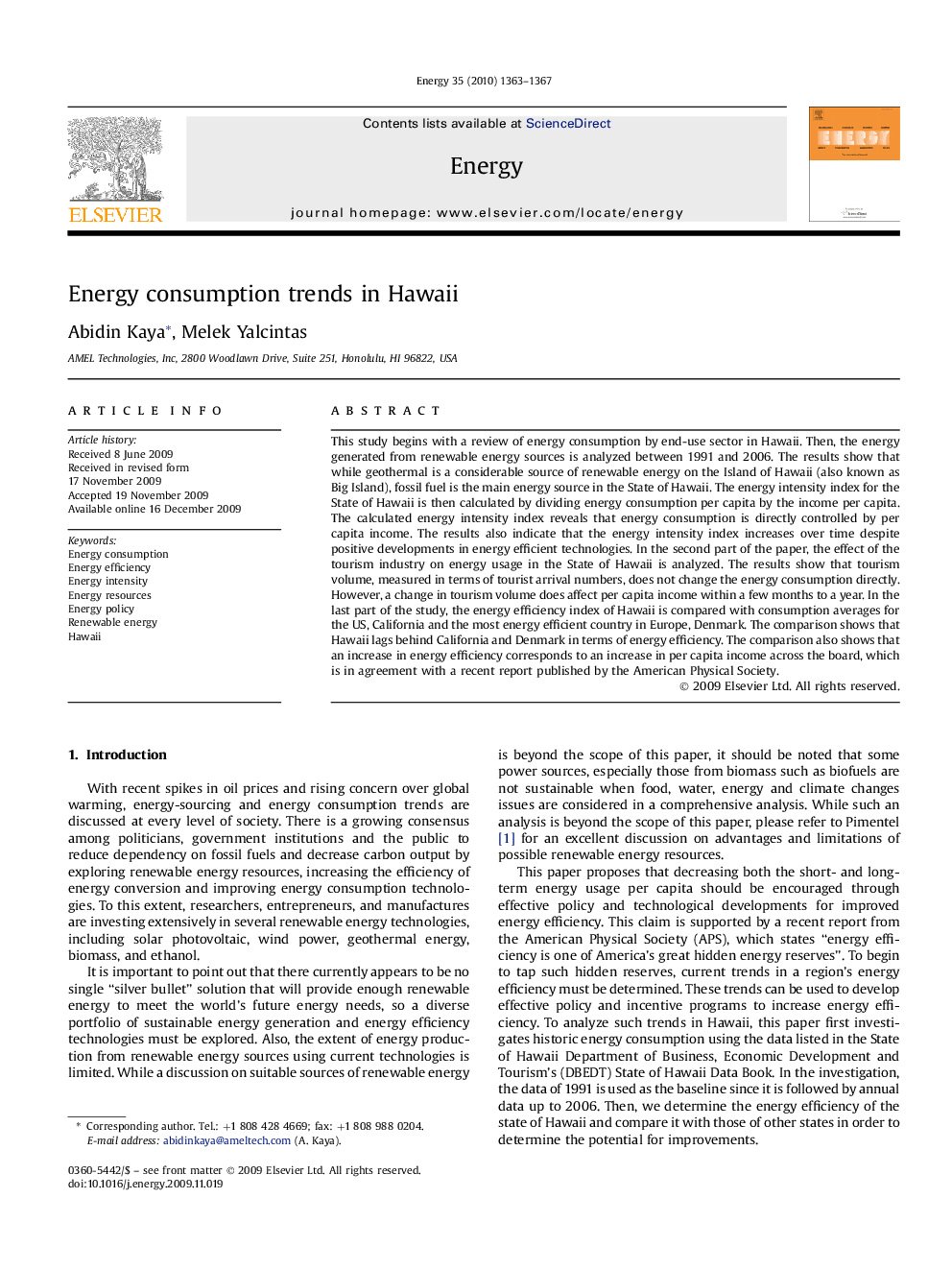| Article ID | Journal | Published Year | Pages | File Type |
|---|---|---|---|---|
| 1735362 | Energy | 2010 | 5 Pages |
This study begins with a review of energy consumption by end-use sector in Hawaii. Then, the energy generated from renewable energy sources is analyzed between 1991 and 2006. The results show that while geothermal is a considerable source of renewable energy on the Island of Hawaii (also known as Big Island), fossil fuel is the main energy source in the State of Hawaii. The energy intensity index for the State of Hawaii is then calculated by dividing energy consumption per capita by the income per capita. The calculated energy intensity index reveals that energy consumption is directly controlled by per capita income. The results also indicate that the energy intensity index increases over time despite positive developments in energy efficient technologies. In the second part of the paper, the effect of the tourism industry on energy usage in the State of Hawaii is analyzed. The results show that tourism volume, measured in terms of tourist arrival numbers, does not change the energy consumption directly. However, a change in tourism volume does affect per capita income within a few months to a year. In the last part of the study, the energy efficiency index of Hawaii is compared with consumption averages for the US, California and the most energy efficient country in Europe, Denmark. The comparison shows that Hawaii lags behind California and Denmark in terms of energy efficiency. The comparison also shows that an increase in energy efficiency corresponds to an increase in per capita income across the board, which is in agreement with a recent report published by the American Physical Society.
